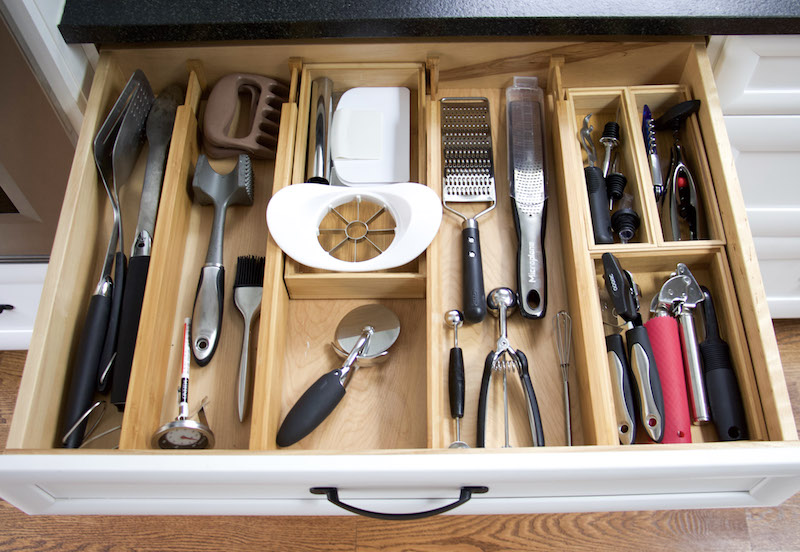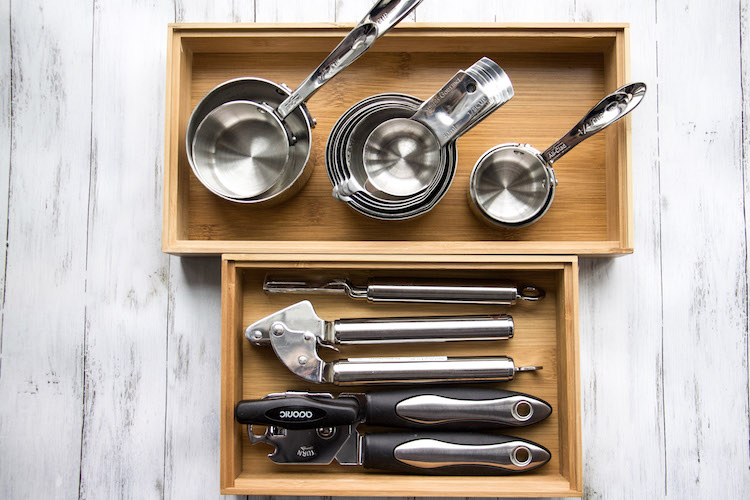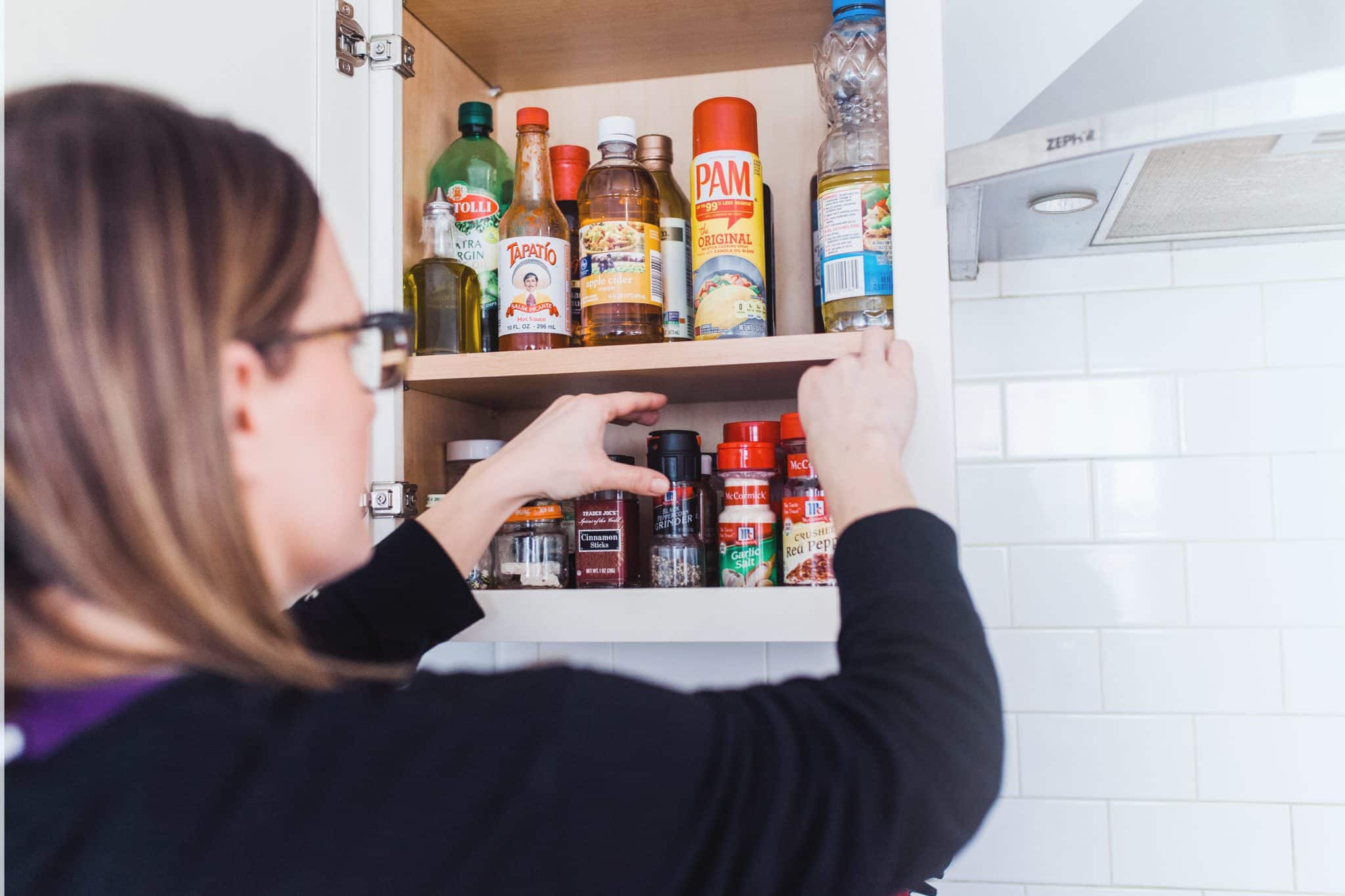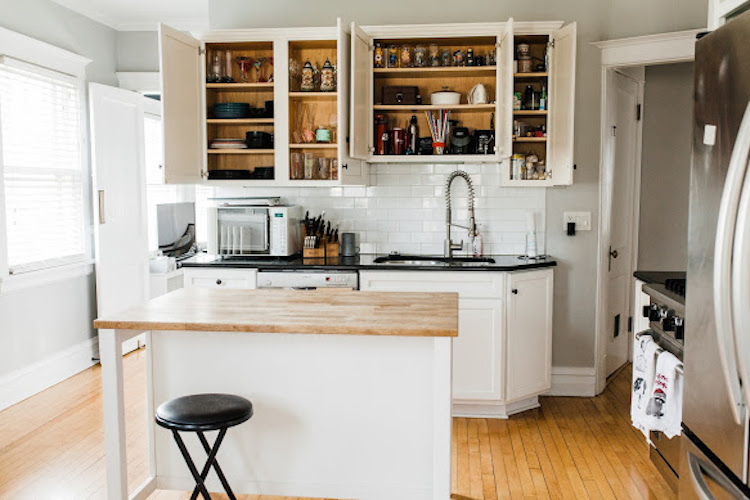I am not a cook. My husband is. And he loves all the kitchen gadgets. You can imagine the conversations we have about kitchen gadgets. He loves them. I hate storing them.
But if they are useful, and it helps him cook faster, I am all for finding a space for that particular gadget. I just don’t like gadgets that we don’t use or have many purposes.
Which is why I wanted to focus on minimalism in the kitchen. Because not everything is about living with less of all the things. Sometimes you need to look at how you use things and decide if it is work keeping.
My definition of minimalism is living with what you need. Which doesn’t always equate to nothing.
Making An Effort
Going from a lot of things in your kitchen to only the items you need takes effort. If you are truly going to create a minimal kitchen, you need to know it will be work to get yourself to truly keep the essentials.
Start by getting crystal clear on why you want less things in your kitchen. Get clear on your “why” for getting organized.
I have more articles you may enjoy:
5 Tips For Clearing Mental Clutter
What Does Organized Mean To You
Minimalism and Organizing Your Home

What Are Your Essentials
So what are your essentials? What are the things you must have in your kitchen?
I can’t answer that because each kitchen is different.
I had a women work with me who kept her oven mitts in her spice drawer because she never cooked. Now, I could never live without a spice drawer, but she could.
Since each kitchen is different, you have to decide what essentials are for you. I talk more about this very thing on my YouTube channel. Our apple slicer is used regularly. While some think it is unnecessary, we use it. So it is an essential kitchen item to us.
Give Yourself Limits
One thing I always do in our kitchen is to give myself limits. A designated spot for one type of category.
By trying to keep one category in a drawer or cabinet together, you are already limiting yourself on what you can store. If you run out of room in that cabinet or drawer, you have to reassess what you are storing in that space.
I do this with most of the things in our kitchen. We have one drawer for spices. Another drawer for baking items. Plates are in another drawer. And all the cups, glasses, water bottles are in another drawer. (Yes, our entire kitchen is drawers because we designed it that way since our old kitchen had only two drawers. And I will never go back to cabinets again.)

Don’t Buy Until You Declutter
If you are looking to create a minimalist kitchen, you have to look at everything in your kitchen. And that includes organizing products.
While I love a beautiful bin to hold things, it doesn’t always serve the purpose it is supposed to.
Start by decluttering all your things first. Only keep what is essential to you, in your kitchen. Then, and only then, can you find a bin or drawer organizer if you feel it will help keep the space organized. But you may find it doesn’t matter. You don’t need it. Which is why we wait until the end to buy any organizing products.

Steps To Creating A Minimalist Kitchen
Step One
To create your minimalist kitchen, start by clearing out everything in your drawers or cabinets.
If that sounds too overwhelming, you can go drawer-by-drawer and cabinet-by-cabinet. You may find you are spending too much time emptying and putting away than actually minimizing your kitchen things. Start by opening each drawer or cabinet and writing down if you want to minimize things in the drawer or cabinet.
Make sure you also clean out the drawers and cabinets with cleaning supplies. I keep them in my declutter caddy. A declutter caddy is just a caddy you keep with all your declutter supplies. You can read my tips for creating one.
Step Two
Group your kitchen items into general categories. I do this by laying out blankets or towels for my kitchen stuff along with storing things on counters and tables. Each area is a specific category.
These categories aren’t really scientific. As you can see, some of my categories are just “things you use”. Don’t over think the categories. Just group together based on how you use them or on how you would like to store them.

Some general kitchen categories may include:
- Things You Eat With Every Day
- Food Prep
- Things You Eat On Every Day
- Things You Drink From Every Day
- Baking Bowls
- Things You Bake With
- Fancy Things
- Spices
- Things You Use To Make Your Food Taste Good
- Platters
- Kitchen Gadgets
- Cooking Utensils
- Small Appliances
- Serving Items
- China
- Cutting Boards
- Tupperware/Storage Containers
- Cups, Glasses, Water Bottles
- Paper Goods
- Pots and Pans
- Baking Trays
Step Three
From those general categories, you can decide what items are essential to you.
This is the part where you decide what to keep and what to get rid of. When I say get rid, I mean donate, sell, or trash. I have more specifics on how to decide whether to donate or sell on my YouTube channel.
You already know what is essential to you. Only keep the items you truly use. The rest can go in a bag you have from your declutter caddy!
Step Four
After you have gone through every category, you are going to grab those Post-It notes from your declutter caddy and write down categories you have left.
Take those Post-It notes and add them to the drawers or cabinets you want the items to go.
I recommend doing this first. You won’t have to think about what should go where while you are putting things back into the drawer or cabinet because you already planned it out ahead of time. You can use your mental energy to visually see what can go where within that drawer or cabinet.
Step Five
Take the items from one category and put it into the drawer or cabinet you assigned.
I try to be really thoughtful as I put things back into the drawer or cabinet. By asking myself if I really want to keep this item as I put it back, I get an extra moment to reduce the items in my kitchen. It’s that buffer, just in case I missed something.
Step Six
Once everything is put back, you can decide if you want to add labels or not. I like adding labels to help remind me of where things should go.
Labels also help my family put things back where they belong, so I don’t have to search for things.
You can leave the Post-It notes on the drawers and cabinets too. That counts as a label!
Putting It All Together
Creating a minimalist kitchen isn’t something that you can just jump into. You want to be thoughtful about why you are creating a kitchen with only essentials.
Take time to sort through your things. Give yourself limits on where to store things. And truly keep the items that are essential to you. Then you can focus on creating a kitchen that has everything you actually use. Which is what a minimalist kitchen truly is.
The post Essential Steps To Creating A Minimalist Kitchen appeared first on The Organized Mama.
